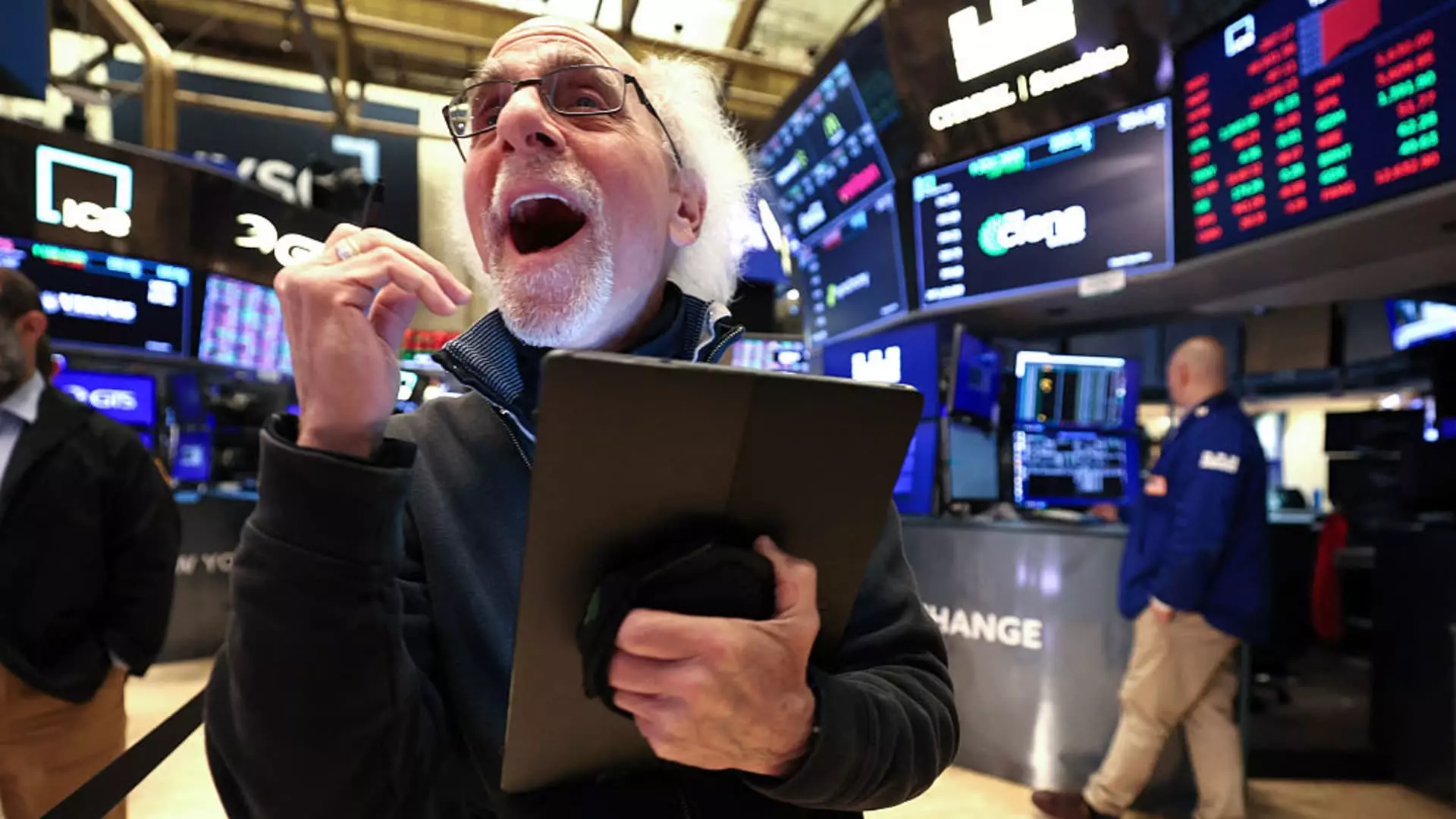The recent uptick in the stock market, highlighted by the S&P 500’s climb past 6,300 and the record-high Nasdaq, may appear optimistic on the surface. However, beneath the veneer of rising indices lies a complex web of distorted perceptions and fragile confidence fueled primarily by corporate earnings reports. The narrative of a promising economic rebound is overplayed, masking the underlying vulnerabilities in our economic fabric. It is crucial to approach this rally with skepticism, recognizing that such gains often stem from transient factors rather than sustained strength.
The market’s rally appears more like an emotional knee-jerk response to positive earnings rather than a reflection of real economic health. While some companies like Verizon and Alphabet beat expectations, these results often are overshadowed by overarching concerns about macroeconomic stability, inflation, and geopolitical tensions. The euphoria surrounding tech giants reporting in this period embodies a broader tendency to overvalue individual successes, neglecting the fundamental fragility that could unhinge these gains at any moment. The belief that the market will naturally correct course and ascend further is optimistic but arguably misguided, given the fundamental economic signals that remain troubling.
Too Much Faith in Earnings—A Mirror of Overconfidence
Investor optimism around earnings success seems disproportionately high, especially when considering the broader economic context. Despite 62 S&P 500 companies reporting, more than 85% exceeding expectations, this may not be sustainable. Relying heavily on corporate earnings to fuel market growth is a dangerous game. In truth, earnings are often inflated or driven by cost-cutting, stock buybacks, or one-off gains rather than genuine revenue expansion. The market’s anticipation of a 14% growth among the “Magnificent Seven” may be overly exuberant, ignoring that these figures could be short-lived or driven by temporary market dynamics.
The relatively muted movements in the Dow Jones—essentially flat—indicate that large-cap stocks are not yet fully convinced of a robust recovery. This hesitance suggests a market wary of overexposure to a string of inconsistent signals. Furthermore, the underlying economic fundamentals, such as inflationary pressures, employment uncertainties, and lingering trade tensions, paint a more cautionary tale. The hope that earnings will continue to outperform — especially when driven by a select few giants — risks creating a false sense of security that could quickly unravel if these companies falter or if external shocks materialize.
Political and Geopolitical Tensions: The Unseen Threat
Amid the optimism, political and trade uncertainties cast long shadows over the market’s trajectory. The White House’s stance on tariffs and trade negotiations remains tepid and unpredictable. While some officials emphasize the “hard deadline” of August 1 for tariff payments, they simultaneously hint at the possibility of ongoing negotiations and dialogues, which presents a double-edged sword. Investors seem to be dismissing these risks as manageable, but history shows that political rhetoric and trade disputes often escalate unexpectedly, leading to sudden market downturns.
The focus on earnings growth may be blinding investors to these larger systemic issues. An overreliance on corporate performance data ignores the geopolitical instability that can erase short-term gains. Tensions with trade partners, inflation spiraling out of control, and policy missteps can all rapidly undermine the fragile confidence that has been built on this current rally. It would be naïve to assume that these political developments are mere noise; they are fundamental risks that can derail any semblance of sustained growth.
The Illusion of Market Resilience
Experts often look to historical patterns, claiming markets tend to rebound strongly after corrections. Yet, this narrative often emphasizes resilience without adequately addressing the caveats. Market recoveries in the past have been fueled by robust economic fundamentals, technological innovations, and policy support. Today, we face a different landscape—one where volatility is amplified by uncertainties in fiscal policy, global trade, and monetary tightening.
The assertion that the market could reach 6,600 before experiencing another decline is optimistic but simplistic. It underestimates the depth of underlying vulnerabilities. Continued faith in technical recoveries and earnings-driven rallies assumes that current conditions will persist unchanged, which contradicts the reality of an unpredictable global economic environment. Investors and analysts should scrutinize whether this rally signals genuine strength or is merely the market’s attempt to shake out pessimism after a period of correction. More often than not, such rebounds are fleeting and set the stage for further turbulence when the next macroeconomic shock hits.
The Myth of a Market in Control
The prevailing confidence that markets are on an upward trajectory reflects a broader societal tendency to view economic indicators as deterministic rather than probabilistic. It is tempting to believe that good earnings will continue to translate into stock market gains, but this mindset ignores the cyclical nature of markets and the role of external shocks. The narrative of an inevitable recovery is appealing but ultimately dangerous when it dismisses genuine warning signs.
The focus on individual company successes and short-term gains clouds the need for a more critical, centrist perspective that recognizes the limits of corporate resilience amid systemic economic vulnerabilities. As history frequently demonstrates, markets do not ascend in a straight line. They are susceptible to setbacks driven by unforeseen factors, including policy misjudgments, geopolitical crises, or sudden changes in investor sentiment. Recognizing this truth is essential in tempering expectations and developing a more nuanced understanding of what the current market rally truly signifies.



Leave a Reply